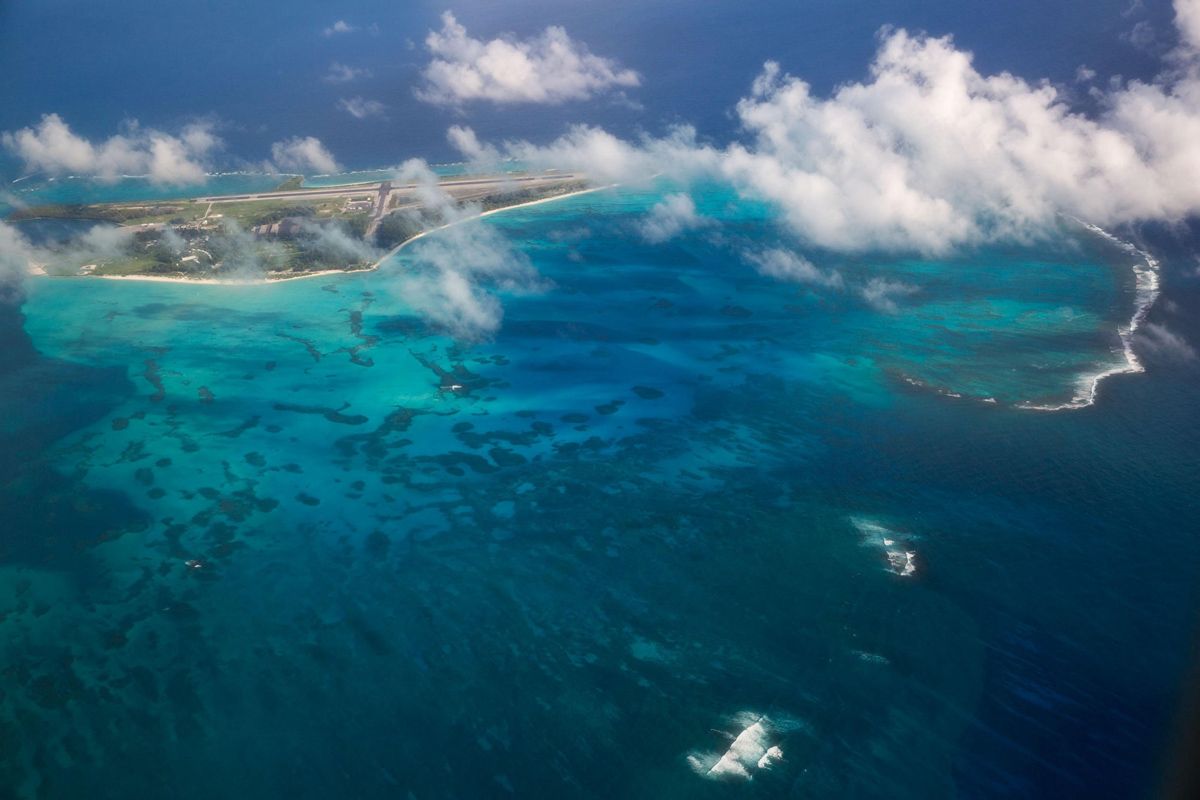Trump Targets US National Monuments in New Executive Order

The largest permanent protected marine area in the world is among the national monuments being reviewed under a new executive order.
President Donald Trump signed the order Wednesday (April 26), requiring the review of presidential designations of any national monument or expansion over 100,000 acres since 1996. Presidents may designate national monuments under the Antiquities Act of 1906, which was designed to allow for the relatively speedy protection of historic artifacts. In comments at the signing of the order, Trump argued that the act has been abused.
"The previous administration used a 100-year-old law known as the Antiquities Act to unilaterally put millions of acres of land and water under strict federal control — have you heard about that? — eliminating the ability of the people who actually live in those states to decide how best to use that land," he said. "Today, we are putting the states back in charge. It's a big thing." [See Photos of the 25 National Monuments Under Review]
Monuments under review
The monuments that would be reviewed under the executive order's guidelines reach far beyond the Obama administration's designations, however. They include the Grand Staircase-Escalante in Utah, established in 1996 under President Bill Clinton; Craters of the Moon National Monument and Preserve, first established in 1924 and then expanded by Clinton in 2000; and the Mariana Trench, which holds Earth's deepest spot and is located east of the Mariana Islands near Guam, established in 2009 by President George W. Bush. Papahanaumokuakea in Hawaii became the world's largest permanent marine-protected area in 2016 when President Barack Obama expanded it, but was originally established by Bush in 2006.
The order also includes the more subjective criteria that monuments may be reviewed "where the Secretary [of the Interior] determines that the designation or expansion was made without adequate public outreach and coordination with relevant stakeholders," which could potentially lead to the review of smaller monuments.
Local debates
National monument designations are a perennial source of controversy in the U.S. West, with conservation, outdoor recreation and tourism interests typically supporting such designations and mining, oil exploration and sometimes agricultural interests often fighting them, according to past reports. The "Sagebrush Rebellion," which began in the 1970s, sought to privatize western federal lands in general or return them to state control. Echoes of that effort continue to be seen today, with the 2016 occupation of Oregon's Malheur National Wildlife refuge by an armed militia group that was protesting the sentencing of two ranchers who had conducted illegal burning on that land.
Particularly controversial on the new review list is Utah's Grand Staircase-Escalante National Monument, which protects 1,880,461 acres (760,996 hectares) of desert canyons and indigenous rock art and ruins. The monument has been a sore point in Utah since Clinton designated it in September 1996, in part because the designation prevented the opening of a coal mine on the Kaiparowits Plateau, according to news reports.
Sign up for the Live Science daily newsletter now
Get the world’s most fascinating discoveries delivered straight to your inbox.
More recently, Obama's designation of Bears Ears National Monument in Utah caused anger among conservatives, who argued that the 1,351,849 acres (547,074 hectares) represented federal overreach. The designation of Bears Ears as a monument was driven by a coalition of five Native American tribes that historically occupied the land and left cliff dwellings and other archaeological sites behind. Those tribes now co-manage the monument with the Bureau of Land Management and the U.S. Forest Service.
No one knows whether the Trump administration has the authority to shrink or eliminate any of the national monuments under review. That's because the Antiquities Act has no provision for rescinding a monument designation, public land law specialist Robert Keiter of the University of Utah told National Geographic. About 20 monuments have been cut in size over the years, according to National Geographic, but none of those (mostly small) adjustments were challenged in court, so there is no legal precedent on the issue. In the case of Grand Staircase-Escalante, a 1998 law passed by Congress approved the transfer of other federal lands in Utah to the state to make up for lands taken over by the monument; the congressional action affirming the monument's boundaries in that law may ensure that a presidential order cannot sweep the monument away.
Original article on Live Science.

Stephanie Pappas is a contributing writer for Live Science, covering topics ranging from geoscience to archaeology to the human brain and behavior. She was previously a senior writer for Live Science but is now a freelancer based in Denver, Colorado, and regularly contributes to Scientific American and The Monitor, the monthly magazine of the American Psychological Association. Stephanie received a bachelor's degree in psychology from the University of South Carolina and a graduate certificate in science communication from the University of California, Santa Cruz.










